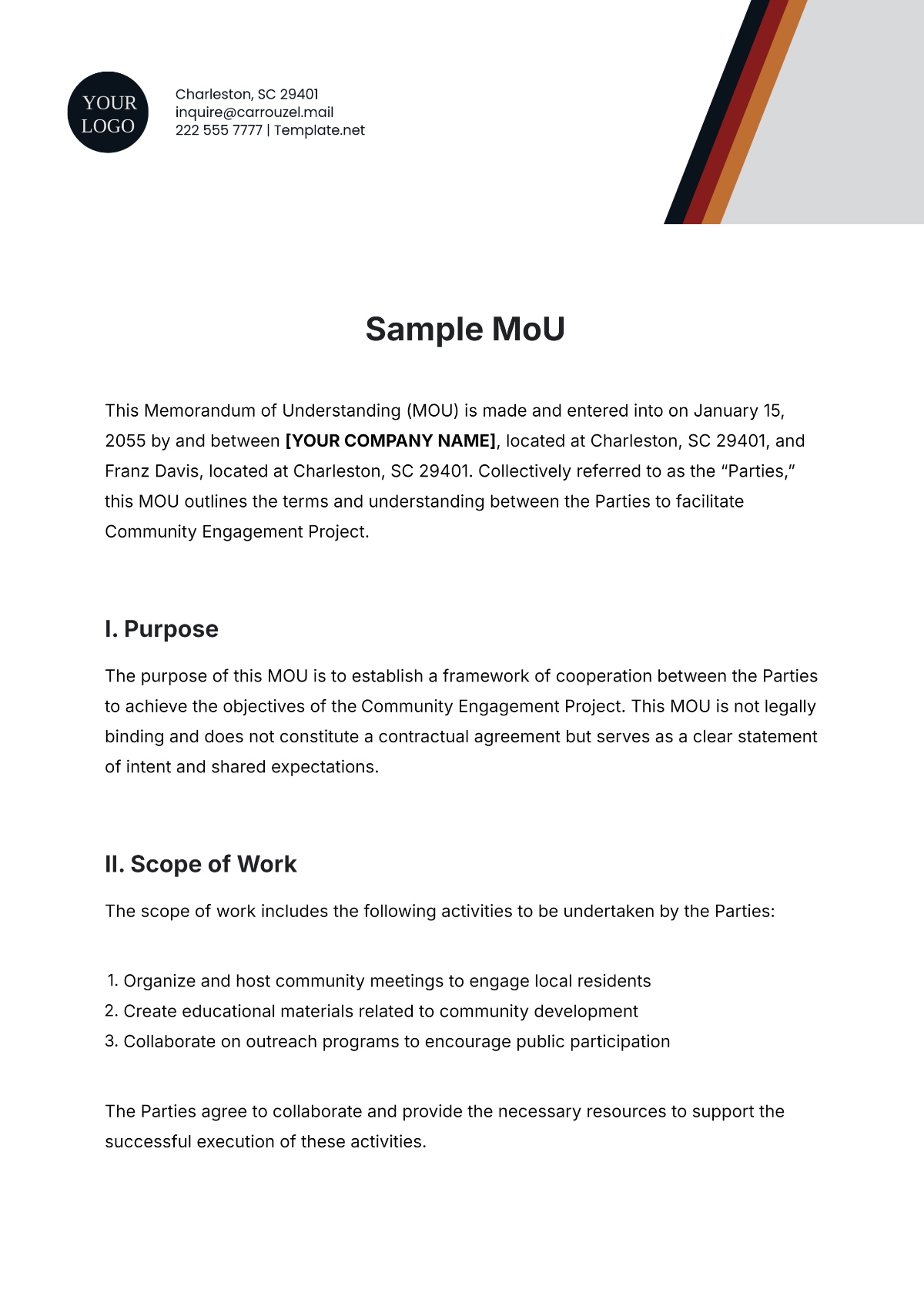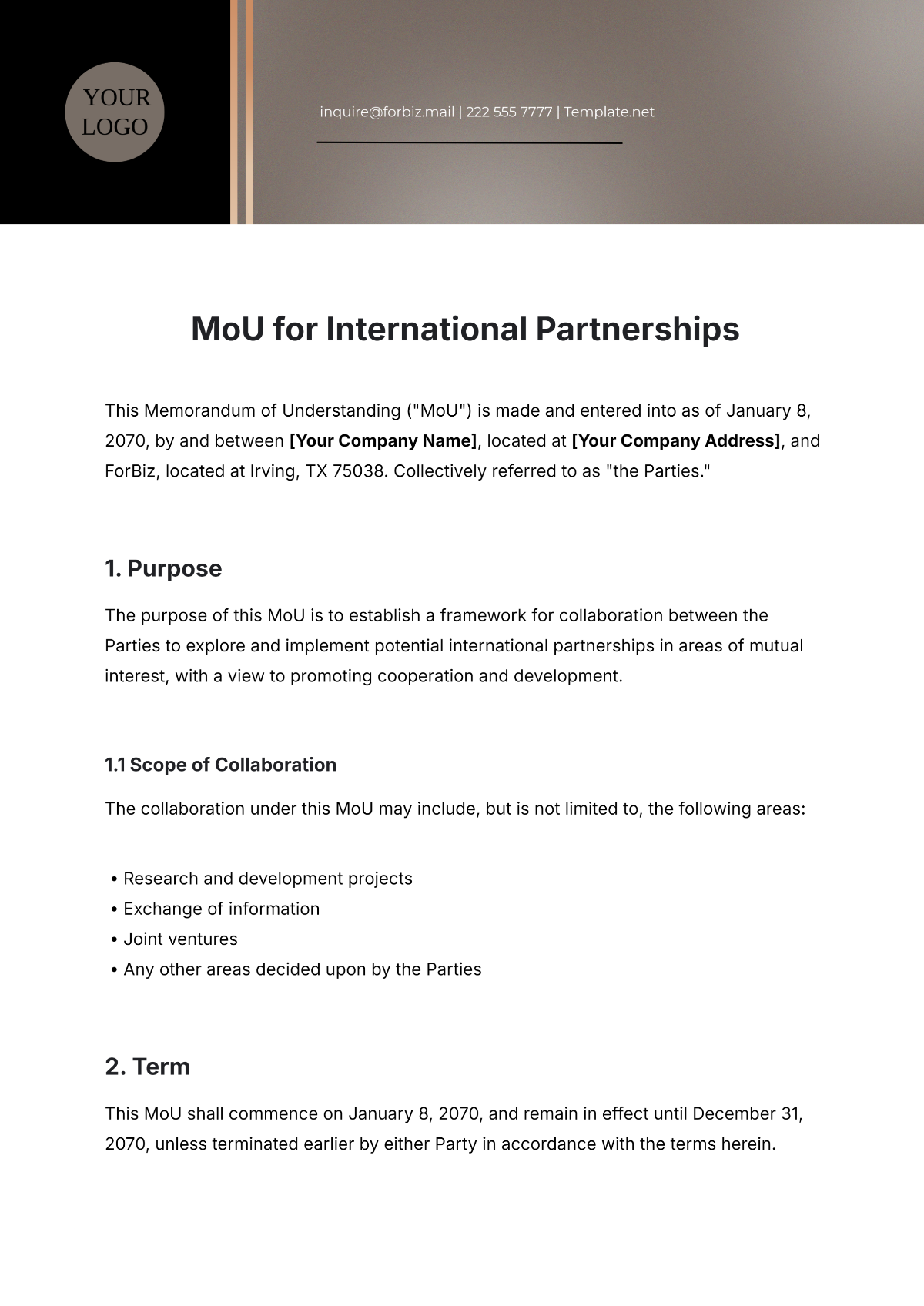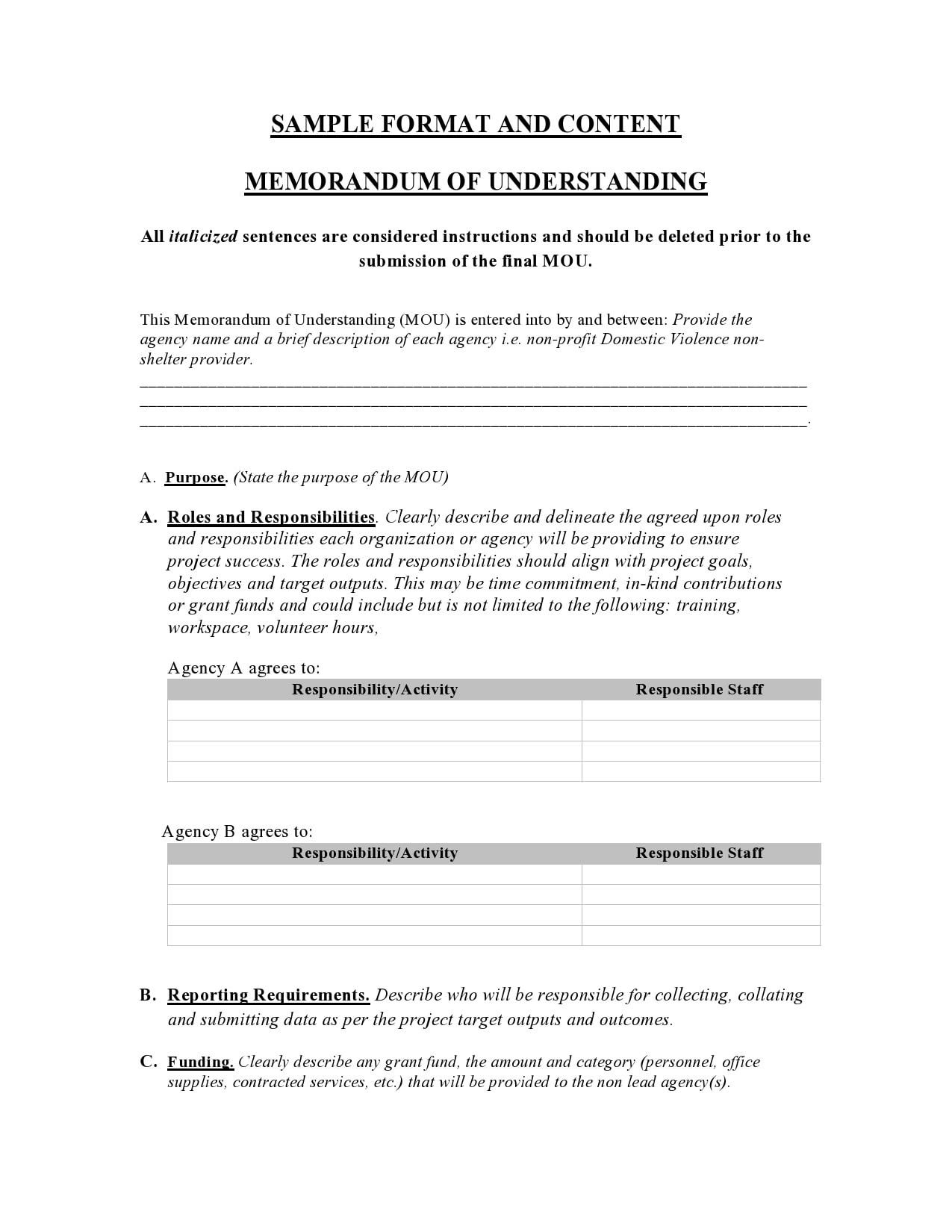The Free MOU Template You Can Use Today: Streamline Your Agreements
Navigating partnerships, collaborations, and projects often requires a solid foundation of understanding. That’s where a Memorandum of Understanding (MOU) comes in. It’s a crucial document that outlines the intentions and agreements between two or more parties. Think of it as a handshake written down, a formal agreement that paves the way for future formal contracts. But getting started shouldn’t be a hurdle. This article provides you with a free MOU template and the knowledge you need to leverage it effectively.
This guide aims to help you understand what an MOU is, why it’s essential, and how to use a free template to create a clear and legally sound agreement. We’ll delve into the key components, best practices, and answer frequently asked questions to empower you to confidently draft your own MOU.
What is a Memorandum of Understanding (MOU)?
A Memorandum of Understanding (MOU) is a non-binding agreement between two or more parties. It signifies that all parties have reached an understanding and are in agreement regarding the course of action. MOUs often serve as a precursor to a more formal, legally binding contract. They outline the broad terms of the agreement, the responsibilities of each party, and the overall objectives of the collaboration.
Key Characteristics of an MOU:
- Non-Binding: Generally, MOUs are not legally enforceable. However, some specific clauses within an MOU might be legally binding (e.g., confidentiality clauses).
- Outline of Intent: The primary purpose of an MOU is to demonstrate the parties’ commitment to working together.
- Framework for Future Agreements: MOUs provide a foundation for more detailed agreements, such as contracts.
- Flexibility: MOUs are less rigid than formal contracts, allowing for adjustments as the project progresses.
Benefits of Using an MOU
Employing an MOU before entering into a formal contract offers several advantages:
- Clear Communication: Ensures all parties are on the same page regarding the project’s goals and expectations.
- Reduced Risk: Helps identify potential issues early on, minimizing the risk of costly disputes later.
- Shared Understanding: Creates a shared understanding of roles, responsibilities, and timelines.
- Framework for Negotiation: Provides a structured basis for negotiating the terms of a formal contract.
- Cost-Effective: MOUs are generally less expensive and time-consuming to create than full-fledged contracts.
How to Use a Free MOU Template Effectively
Using a free MOU template can significantly streamline the process of drafting your agreement. Here’s a step-by-step guide:
- Download and Customize: Download a reputable free MOU template. Replace the bracketed placeholders with the specific details of your agreement. These details include the names of all parties involved, the date of the agreement, and the purpose of the MOU.
- Define the Purpose and Scope: Clearly state the purpose of the MOU and the scope of the collaboration. This section should concisely explain what the parties intend to achieve.
- Outline the Responsibilities: Detail the specific responsibilities and obligations of each party. Be as clear and specific as possible.
- Establish a Timeline (Optional): If applicable, include a timeline for the project or collaboration. This can include start and end dates or key milestones.
- Include Confidentiality Clause (Important): Include a clause that addresses the confidentiality of sensitive information shared between the parties.
- Define Termination Clause: Specify the conditions under which the MOU can be terminated.
- Signatures: Ensure that all parties involved sign and date the MOU. This signifies their agreement with the terms outlined.
Key Elements to Include in Your MOU
While the specifics of an MOU will vary depending on the project, certain elements are generally included:
- Parties Involved: Clearly identify all parties involved in the agreement, including their full legal names and contact information.
- Purpose of the MOU: Define the objective of the collaboration, outlining what the parties intend to achieve together.
- Scope of the Agreement: Describe the specific activities, projects, or areas that the MOU covers.
- Responsibilities of Each Party: Detail the obligations, roles, and contributions of each party. This should be clear and specific.
- Financial Considerations (if applicable): If any financial aspects are involved (e.g., cost sharing, resource allocation), include them.
- Term and Termination: Specify the duration of the MOU and the conditions under which it can be terminated.
- Confidentiality: Include a clause addressing the confidentiality of sensitive information exchanged between the parties.
- Governing Law: Identify the jurisdiction whose laws will govern the interpretation and enforcement of the MOU.
- Signatures: Include signature blocks for each party involved, along with the date of signing.
Where to Find a Free MOU Template
Numerous online resources offer free MOU templates. Ensure the template is from a reputable source and is easily editable. Some popular options include:
- LegalZoom: Offers a downloadable template.
- DocuSign: Provides a template as part of its free resources.
- LawDepot: Has a variety of legal document templates.
- Microsoft Word/Google Docs: Search for “MOU template” within these programs to find customizable options.
Important Considerations Before Using a Template
- Legal Review: While a free template can be a great starting point, consider having your MOU reviewed by a legal professional, especially if the project is complex or involves significant financial implications.
- Adaptation: Always adapt the template to fit your specific needs. Don’t just fill in the blanks; consider the unique circumstances of your collaboration.
- Clarity and Precision: Use clear and precise language to avoid ambiguity.
- Collaboration: Involve all parties in the drafting and review process to ensure everyone understands and agrees with the terms.
Conclusion
A Memorandum of Understanding is a valuable tool for establishing clear communication and setting the stage for successful collaborations. By utilizing a free MOU template, you can significantly streamline the process of creating these essential documents. Remember to customize the template to fit your specific needs, ensure clarity, and consider seeking legal review for complex projects. By following these guidelines, you can confidently leverage the power of MOUs to build stronger partnerships and achieve your goals.
Frequently Asked Questions (FAQs)
1. Is an MOU legally binding?
Generally, MOUs are not legally binding. However, some clauses within an MOU, such as a confidentiality clause, may be legally binding. It is essential to state whether the MOU is intended to be binding.
2. How long should an MOU last?
The duration of an MOU depends on the project or collaboration. It should be long enough to cover the intended period of cooperation. The MOU should also include a termination clause, allowing parties to end the agreement under specific conditions.
3. What is the difference between an MOU and a contract?
An MOU is a non-binding agreement outlining the intent to work together. A contract is a legally binding agreement that details the specific terms and conditions of a transaction or project. MOUs often serve as a precursor to contracts.
4. Do I need a lawyer to create an MOU?
While a lawyer is not always required, it’s advisable to have one review your MOU, especially for complex projects or those involving significant financial or legal implications. A lawyer can help ensure your agreement is legally sound and protects your interests.
5. Can an MOU be modified?
Yes, an MOU can be modified by mutual agreement of all parties involved. Any modifications should be documented in writing and signed by all parties.




